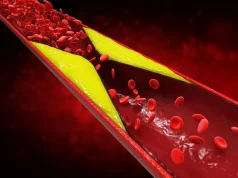800,000 U.S. adults surveyed; prevalence of heroin use increased from 0.17 to 0.32 percent
WEDNESDAY, Feb. 12, 2020 (HealthDay News) — The prevalence of heroin use, heroin use disorder, and heroin injection increased from 2002 to 2018, according to a research letter published in the Feb. 11 issue of the Journal of the American Medical Association.
Beth Han, M.D., Ph.D., from the Substance Abuse and Mental Health Services Administration in Rockville, Maryland, and colleagues assessed heroin-related trends across respondents to the 2002 to 2018 National Surveys on Drug Use and Health. A total of 800,500 adult responders reported sociodemographic characteristics, past-year heroin use, heroin use disorder, and heroin injection.
The researchers found that from 2002 to 2018, the prevalence of heroin use increased from 0.17 to 0.32 percent (average annual percentage change [APC], 5.6; 95 percent confidence interval [CI], 1.0 to 10.5; P = 0.02). Within that time, heroin use specifically increased from 2002 to 2016 (APC, 7.6; 95 percent CI, 6.3 to 9.0; P < 0.001) and plateaued from 2016 to 2018 (APC, −7.1; 95 percent CI, −36.9 to 36.7; P = 0.69). The prevalence of heroin use disorder increased from 0.1 to 0.21 percent from 2002 to 2018 (average APC, 6.0; 95 percent CI, 3.2 to 8.8; P < 0.001) and also plateaued in recent years. The prevalence of heroin injection increased continuously from 0.09 to 0.17 percent from 2002 to 2018 (average APC, 6.9; 95 percent CI, 5.7 to 8.0; P < 0.001). In 2018, past-year heroin injection was highest in adults in the Northeast (0.32 percent) and in those aged 26 through 34 years (0.31 percent).
“During the years 2002 to 2018, reported past-year prevalence of heroin use, heroin use disorder, and heroin injection increased among adults in the United States,” the authors write. “The recent leveling off of heroin use might reflect shifts from heroin to illicit fentanyl-related compounds. Future research needs to examine differences in heroin injection trends across subgroups.”
One author disclosed financial ties to Pfizer.
Copyright © 2020 HealthDay. All rights reserved.








